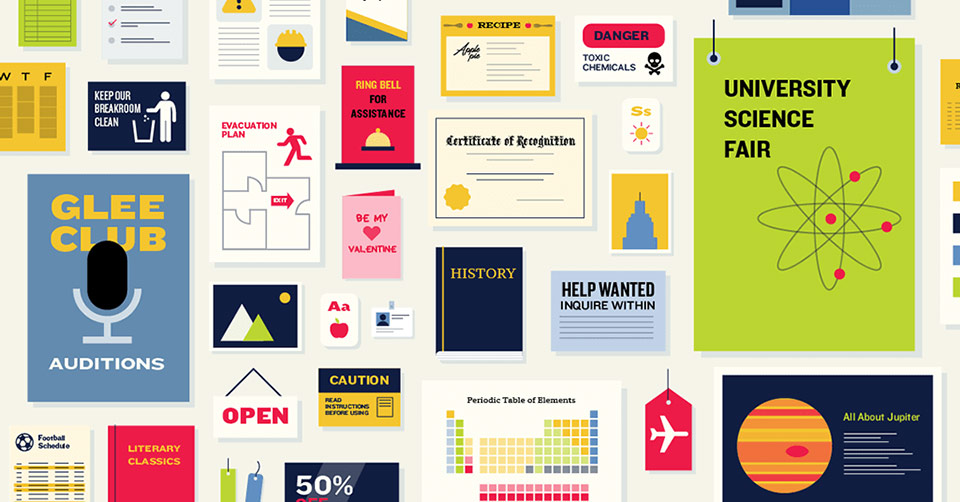While different laminator models have distinct features and quirks, the basic usage instructions for most laminators are fairly standard. Here are several best practices for using common laminator machines.
- Load the laminating film (or insert your paper into a laminating pouch)
Most laminating machines need you to load two separate rolls of film to complete your lamination project. Follow your specific machine's directions for loading.
In lieu of laminating film, some machines require you to place your paper inside of a laminating pouch.
- Turn on and preheat the laminator
Before you use the laminator, it needs to warm up. Different machines need to be preheated for different periods of time, so consult the specific requirements for the machine that you're using. Most machines have an indicator light that turns on when the machine is preheated and ready to laminate.
Note: Some machines require you to choose a temperature and/or speed setting. The speed setting relates to the thickness of the paper: Thick items (such as poster board) should be laminated at slower speeds, while thinner items (such as regular printer paper) can be laminated at faster speeds.
- Prep the paper
Before sending paper through the laminator, make sure it's cut to your size preferences and that its edges are tidy. You won't be able to adjust the paper once it's laminated, so make sure it looks the way you want it to before using the laminator.
If you use a machine that relies on laminator pouches, place the paper neatly inside of the pouch before feeding it into the machine. Insert the pouch sealed-side first to avoid jamming the laminator.
- Feed the paper into the machine
Once the machine is preheated and you've prepped your paper, it's time to laminate! Start by placing the paper on the laminator shelf so it's flush with the rolls of film. Then flip the feed switch so the machine starts drawing the paper into itself.
- Don't turn off the feed right away
Allow the paper to move completely through the machine and generate a little “tail” of film before you stop the feed. This gives you enough room to cut the edges without cutting too close to the paper. Once the paper is fully out of the machine, press the “stop” button.
- Cut the laminating film
Some machines require you to use scissors to cut the tail of laminating film and remove your laminated paper from the laminator. Others have perforations to tear the film behind your laminated paper or built-in cutting devices that let you cut the film without the use of scissors.
- Trim your project
Once the laminated paper has cooled, neaten it by trimming the edges. Use a paper cutter to give your project sharp, straight edges. Leave a thin border of laminating film around the edges so no part of the paper is exposed to the elements.
- Turn off the laminator
There's no sense in wasting electricity on a machine that's not in use, so remember to turn off the laminator when you're done with it.

Get code to share this infographic on your site
Benefits of a Laminator Machine
In a world where new high-tech office gadgets become available on a near-constant basis, laminator machines can still hold their own.
Lamination, which involves sandwiching a piece of paper (printer paper, poster board, card stock, and so on) between two thin pieces of plastic, offers several benefits.
- It reduces wear and tear on paper documents and protects them from smudges, stains, and spills.
- It offers strength and rigidity to paper documents, thereby enhancing their professionalism.
- It protects printouts that are used in greasy, damp, or dirty environments.
- It enables workplaces to post long-lasting flyers, posters, signage, and more, which adds some color to the office space.
- It allows workplaces to create durable and long-lasting labels, which helps save money on label maker tape.
- It extends the life of paper printouts and reduces printer costs.
Once you understand the benefits of lamination, it's time to put your office or home laminator machine to good use.
Share this infographic on your site
Laura Newcomer
Laura Newcomer is a writer, editor, and educator with multiple years of experience working in the environmental and personal wellness space. Formerly Senior Editor at the health site Greatist, Laura now lives and works in Pennsylvania. Her writing has been published on Washington Post, TIME Healthland, Greatist, DailyBurn, Lifehacker, and Business Insider, among others. She has taught environmental education to students of all ages in both Pennsylvania and Maine, and prioritizes living an environmentally sustainable lifestyle. She's a big proponent of creating self-sustaining communities and accessible healthy food systems that care for both people and the earth. An avid outdoorswoman, she can often be found hiking, kayaking, backpacking, and tending to her garden.


